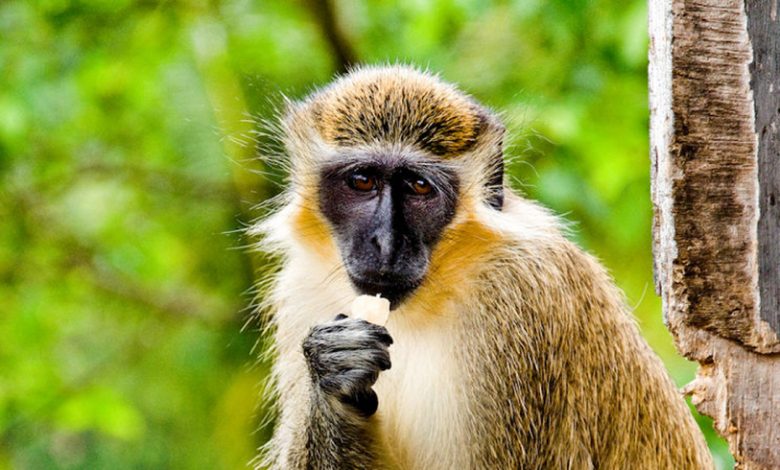Religion and worship

Abhinandananatha with his symbol of monkey below his idol
Monkey is the symbol of fourth Tirthankara in Jainism, Abhinandananatha.[62][63]
Hanuman, a prominent deity in Hinduism, is a human-like monkey god who is believed to bestow courage, strength and longevity to the person who thinks about him or Rama.
In Buddhism, the monkey is an early incarnation of Buddha but may also represent trickery and ugliness. The Chinese Buddhist “mind monkey” metaphor refers to the unsettled, restless state of human mind. Monkey is also one of the Three Senseless Creatures, symbolizing greed, with the tiger representing anger and the deer lovesickness.
The Sanzaru, or three wise monkeys, are revered in Japanese folklore; together they embody the proverbial principle to “see no evil, hear no evil, speak no evil”.[64]
The Moche people of ancient Peru worshipped nature.[65] They placed emphasis on animals and often depicted monkeys in their art.[66]
The Tzeltal people of Mexico worshipped monkeys as incarnations of their dead ancestors.
